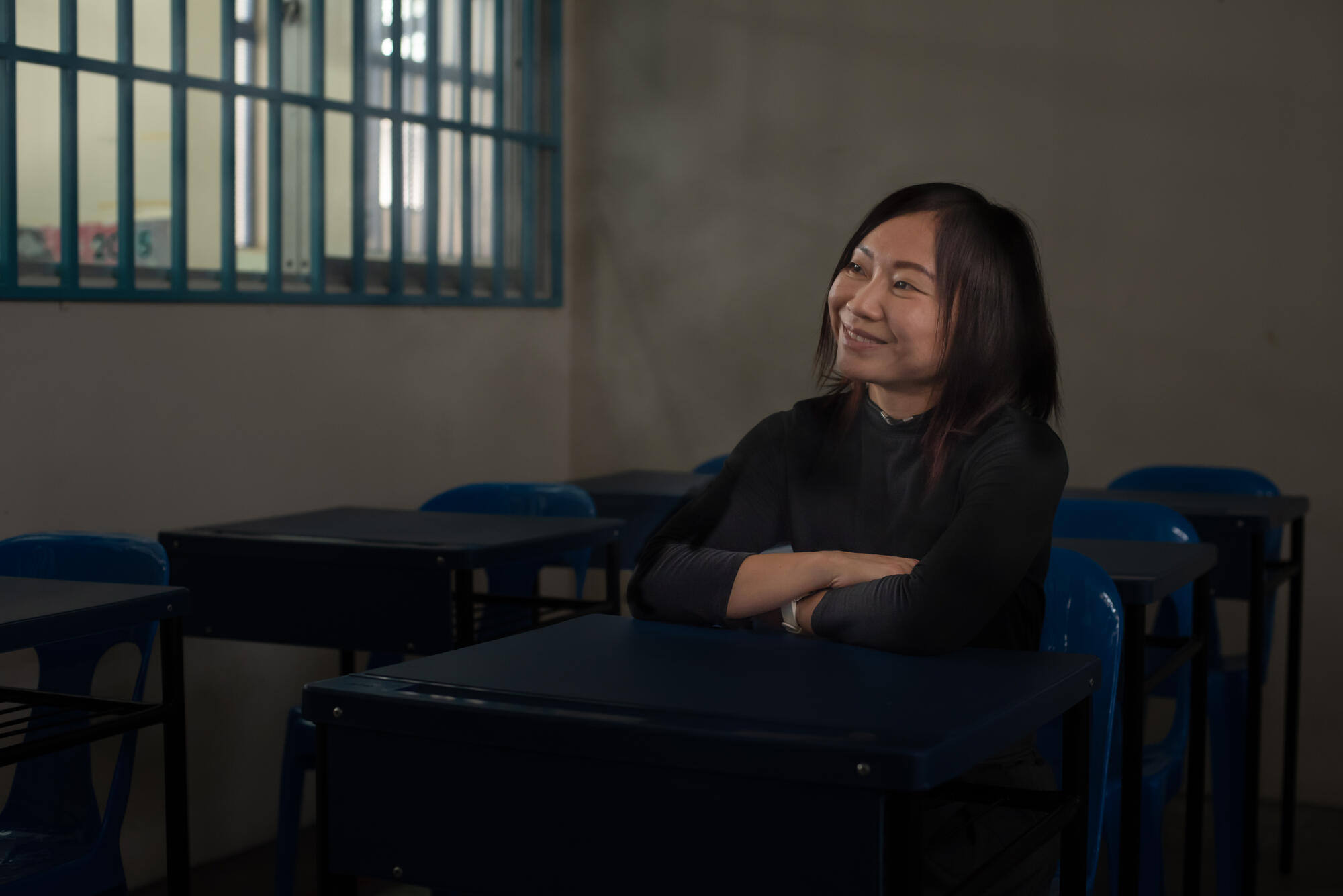By Ms Sem Hui Leng, Head Studies, Administration and Character and Citizenship Education, Prison School
On my first day at Prison School, I was impressed that students in my Form Class took the rags and began cleaning the tables, chairs and windows. This was orientation day, and I hadn’t given them any instructions.
Within a few minutes the thick dust that had gathered during the school holidays instantly vanished. Then, the students formed groups – one to discuss the design of our noticeboard; another set about painting murals on the walls.
In the months that followed, my students automatically collected learning materials for cellmates who were absent from lessons.
They cleaned the whiteboard for teachers without being asked, and grabbed the heavy stacks of worksheets from me when I stepped into the classroom.
All these little acts warmed my heart, and made my work at Prison School a pleasant one.
Teaching in prison is a race against time. We have to complete four years of secondary school curriculum within nine months. The Prison School’s curriculum is compressed, allowing inmates to move on to more advanced levels in a shorter amount of time and allows for more inmates to benefit from the limited vacancies every academic year. So, every lesson missed is one too many.
The classes also comprise of students ranging from the ages of 17 to 60 and varying in the years since they last attended formal education. Their level of motivation to study also varies.
One teaching strategy that has worked well is peer teaching – where a student with better performance is paired with a weaker one. Stronger students feel more confident, with raised self-esteem when they get to tutor their peers. In turn, students with weaker performance benefit from one-to-one coaching.
Over the years, I also try to simplify explanations of concepts, and use relevant real-life examples that students can relate to. When teaching simple and compound interest, I infuse correctional education that informs the class that smoking is not only bad for the health of smokers and their family members, but it is also bad for their wealth. I got the students to work out the amount they could save if they do not smoke for 10 years and work out further how this sum of money will grow if they were to invest it with banks that pay simple and compound interests. Some were awestruck by the savings and told me that they will quit smoking.
Many of my students told me that they have never passed their Math examinations during their school life prior to prison. Some candidly shared that they hated the subject. So, a few months later, it was reassuring to hear the same students tell me that they have started to love the subject.
Although my students whine whenever I set them homework assignments (as you’d expect), they have never failed to complete and submit their papers by the deadline – some even earlier!

Ms Sem started teaching with MOE in 2000. She joined the Prison School in 2014.
I only interact with the inmates during scheduled lesson and curriculum hours – unlike in mainstream schools where teachers can catch up with students after lessons end; students in Prison School are scheduled for other rehabilitative programmes. In a typical week, I spend four hours and 30 minutes (five to six periods) teaching Mathematics for one class, and another 90 minutes for Character and Citizenship Education (CCE) lessons.
Having spent six years teaching in Prison School, I’ve seen education serve as an opportunity for students to turn their lives around. It is a social leveller. For inmates, it helps them build a better future for themselves and their families; to become more responsible, resilient and valuable members of the community upon their release.
I taught Ethan (not his real name) in 2016 when he enrolled for the O level examinations in Prison School. He was incarcerated for drug and criminal charges and was released in December 2017.
Although he struggled in his studies initially, he persevered and performed well in his O Levels and subsequently his A Levels in 2017. He also participated in the National Youth Achievement Award (NYAA), an experience that he says, taught him valuable problem-solving skills. He is currently pursuing his degree in NUS. He believes that with a positive attitude and a strong mind-set to persevere, one will definitely see the outcome of his labour.
A version of this article was originally published in Issue 34 of “Contact: The Teachers’ Digest” with the headline “Teaching Behind Bars”.





-(1).jpeg)
